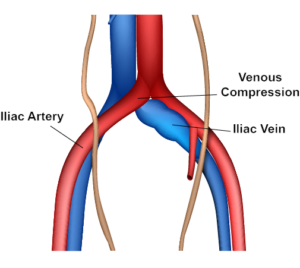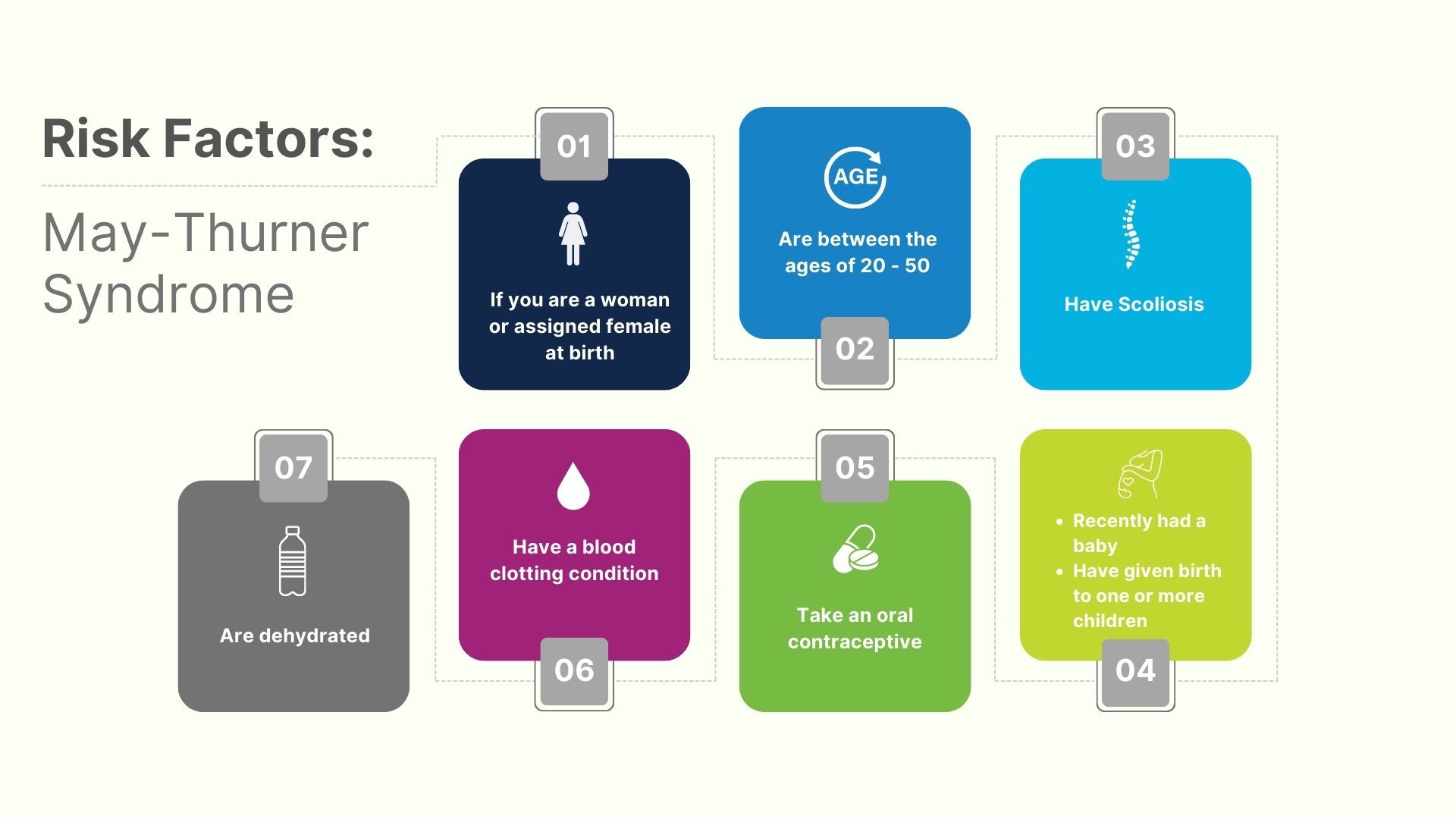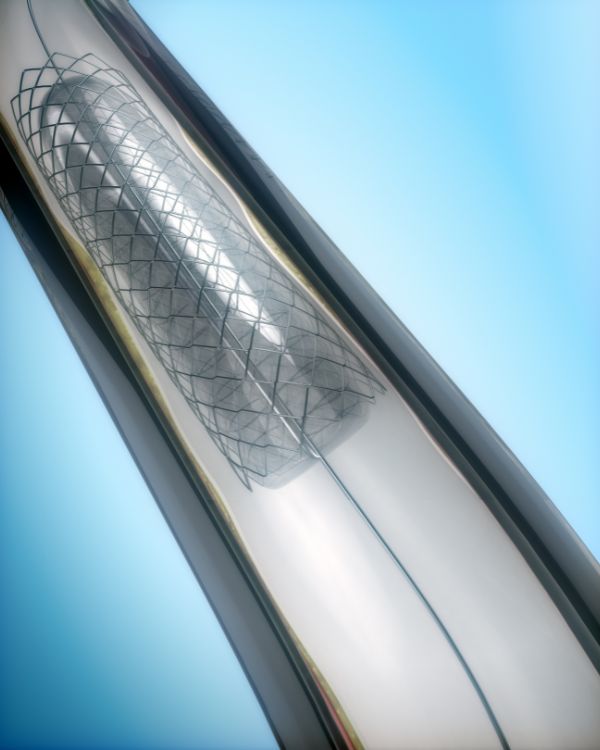May-Thurner Syndrome

 May-Thurner Syndrome (MTS), also known as Iliac Vein Compression Syndrome or Cockett Syndrome, is a rare condition in which the left iliac vein in the pelvis, which carries blood from the left leg, is compressed by the right iliac artery, leading to restricted blood flow and potential blood clot formation in the affected vein. The compression occurs in the pelvis, where the left iliac vein lies between the right iliac artery and the spine.
May-Thurner Syndrome (MTS), also known as Iliac Vein Compression Syndrome or Cockett Syndrome, is a rare condition in which the left iliac vein in the pelvis, which carries blood from the left leg, is compressed by the right iliac artery, leading to restricted blood flow and potential blood clot formation in the affected vein. The compression occurs in the pelvis, where the left iliac vein lies between the right iliac artery and the spine.
Symptoms of May-Thurner Syndrome
Patients may experience the following symptoms (usually only affecting the left leg), especially if they have DVT:
- Generalize pelvic pain
- Pain, throbbing or tenderness
- Swelling and feelings of heaviness
- Open sores
- Skin discoloration
- Varicose veins
 Diagnosing May-Thurner Syndrome
Diagnosing May-Thurner Syndrome
Your healthcare provider will examine you, and review your symptoms and medical history. They may refer you for diagnostic imaging that could include one or more of the following:
- Ultrasound
- CT
- MRI
- Venogram (a type of X-ray that uses contrast to show the veins in your legs)
Treatment options may include clot busters, blood thinners, Angioplasty and stent, or bypass surgery.
Treatment: Angioplasty and Stent
Depending on the severity of your symptoms, Angioplasty and stent placement is a minimally invasive, outpatient procedure that quickly resolves blood flow through the left iliac vein without surgery.
The Procedure
 While sedated, a small balloon catheter is inserted into the narrowed or blocked vein, through the femoral or radial artery. The catheter is then guided to the compressed iliac artery using imaging guidance. A small balloon at the tip of the catheter is then inflated to widen the narrowed area and improve blood flow.
While sedated, a small balloon catheter is inserted into the narrowed or blocked vein, through the femoral or radial artery. The catheter is then guided to the compressed iliac artery using imaging guidance. A small balloon at the tip of the catheter is then inflated to widen the narrowed area and improve blood flow.
Next, a small metal mesh tube called a stent will be inserted into the affected vein to help keep it open after the balloon is deflated and removed. The stent will remain in place permanently and acts as a scaffold to support the left iliac vein and prevent it from being compressed again.
The Recovery
Following angioplasty and stent placement…
Insurance Coverage
Nearly all insurance companies, including Medicaid and Medicare, will cover angioplasty and vascular stenting for May-Thurner Syndrome.
Our team will work with insurance companies to verify coverage for your consultation as well as any procedures you may require.
The Next Step
Patients who are experiencing symptoms of May-Thurner Syndrome should contact their healthcare provider who will work with our TRA Endovascular team on a plan to evaluate and treat your condition.
Have Questions?
Contact UsAdditional Resources: Radiologyinfo.org
